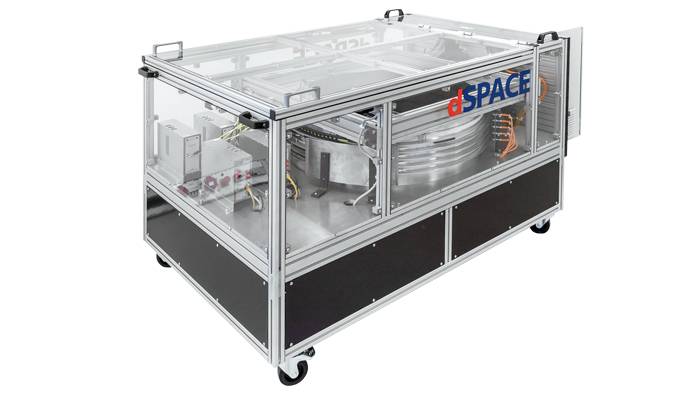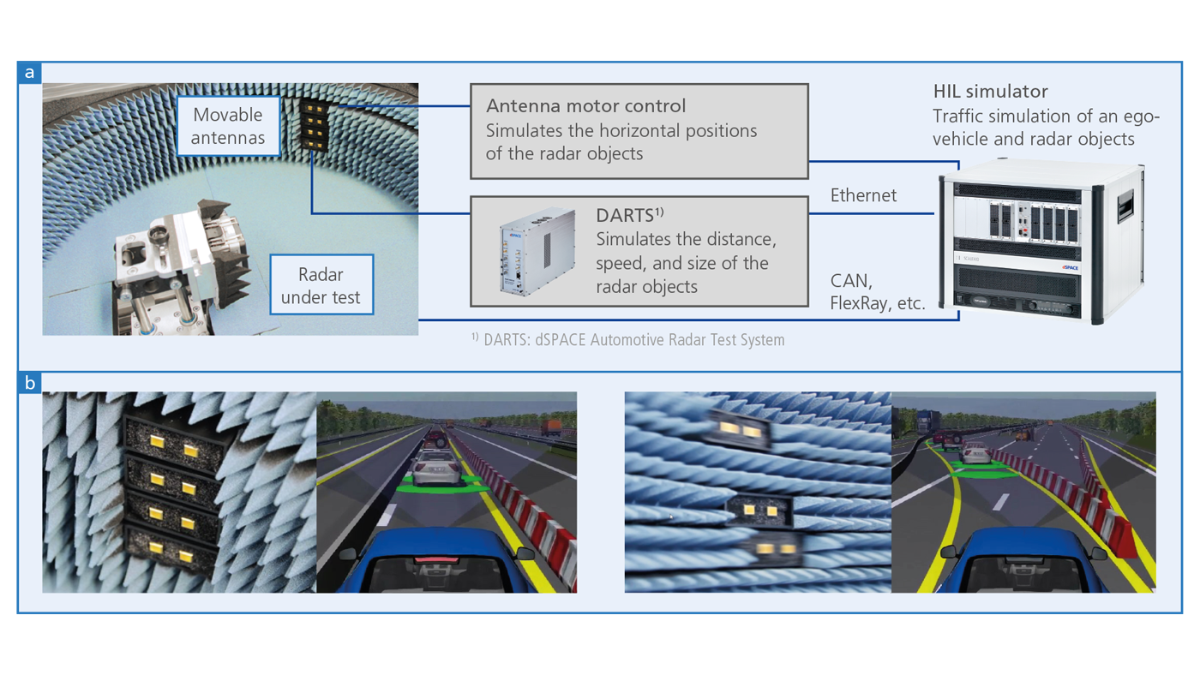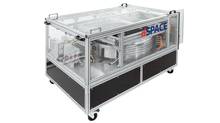Radar Test Bench – Compact 3D
- Over-the-air stimulation of the radar sensor
- Reliable multitarget angle simulation for up to 20 radar objects in real time
- Test of the complete chain of effects
- Support for 24, 77, and 79 GHz radars
Aside from cameras and ultrasonic sensors, radar sensors are the most commonly used environment sensors in the automotive industry. They are used in many applications, such as adaptive cruise control (ACC) and autonomous emergency braking (AEB), and will continue to play an important role in highly automated and autonomous driving. To be able to test realistically and reproducibly in the laboratory, various factors must be taken into consideration. On the one hand, a radar sensor must be stimulated by generated radar echoes that correspond to real radar objects, such as vehicles or pedestrians, at different distances, relative speeds, and azimuth angles. On the other hand, undesired radar reflections must be avoided by implementing adequate measures. With the radar test bench, dSPACE offers a reliable solution for realistically testing radar-based vehicle functions using a synchronized closed-loop HIL. Furthermore, the radar test bench enables verification tests of the radar sensor and its components as well as application specific measurement of the antenna diagram.
Key Benefits
To test the entire chain of effects, the radar test bench provides over-the-air stimulation of the radar sensor front end. The test bench allows a reliable multitarget angle simulation for up to 20 radar targets in real-time. The test bench essentially consists of an anechoic chamber with send/receive functionality, up to five calibrated dSPACE Automotive Radar Test Systems (DARTS), and a SCALEXIO HIL simulator. For the test, the radar sensor is locked into the chamber, where it is stimulated with the radar echoes. The concentric movement of the antennas returns information on their azimuth angle. If desired, the simulation can include the front bumper and chassis of the vehicle. This way, all the software and hardware layers can be taken into account, from detecting the signal at the front of the radar to evaluating it in the radar ECU. The coherent echoes allow for the radar ECU to reliably determine the distance and the velocity of the radar objects. Driving scenarios that are simulated with the Automotive Simulation Models (ASM) are the basis for this. The radar ECU is also connected to the HIL simulator via a vehicle bus for exchanging the list of detected radar objects with the simulation environment in closed-loop operation. The radar test bench supports radar sensors with 24, 77, and 79 GHz of any modulation scheme. It can be adjusted to individual requirements and operated synchronously with further radar test benches or with other test systems (camera, ultrasound, etc.).
| Parameter | Specification |
|---|---|
| Radar objects |
|
| Update rate |
|
|
Distance range Increment |
|
|
Speed range Increment |
|
| Tilt angle range of device under test |
|
|
Azimuth angle range Accuracy |
|
| Azimuth angular speed |
|
| Supported radar frequencies |
|
| Bandwidth |
|
-
- View online
- Download
- Radar Test Bench – Advanced 6D The Radar Test Bench – Advanced 6D is designed especially for the validation and specification of next generation radar sensors (e.g., separability, field of view, resolution).
- Radar Test Bench – Essential 2D The Radar Test Bench – Essential 2D makes it possible to perform azimuth and elevation simulation for a single target. With two degrees of freedom, the test bench is suitable for component tests, simple ADAS function tests, and ECU validation.
- EOL CATR Test System Precise end-of-line testing of radar sensors with high throughput and flexible test scenarios
Drive innovation forward. Always on the pulse of technology development.
Subscribe to our expert knowledge. Learn from our successful project examples. Keep up to date on simulation and validation. Subscribe to/manage dSPACE direct and aerospace & defense now.




